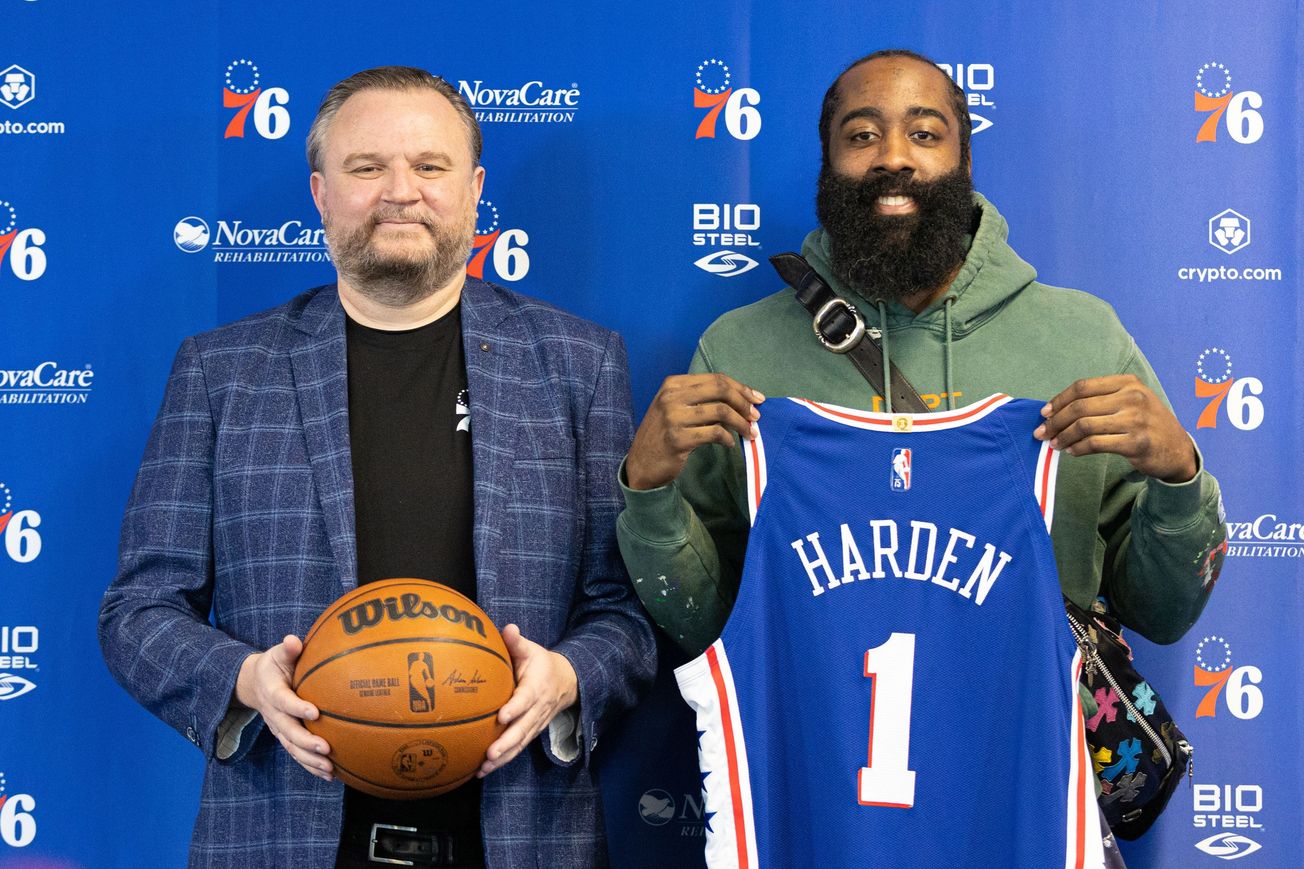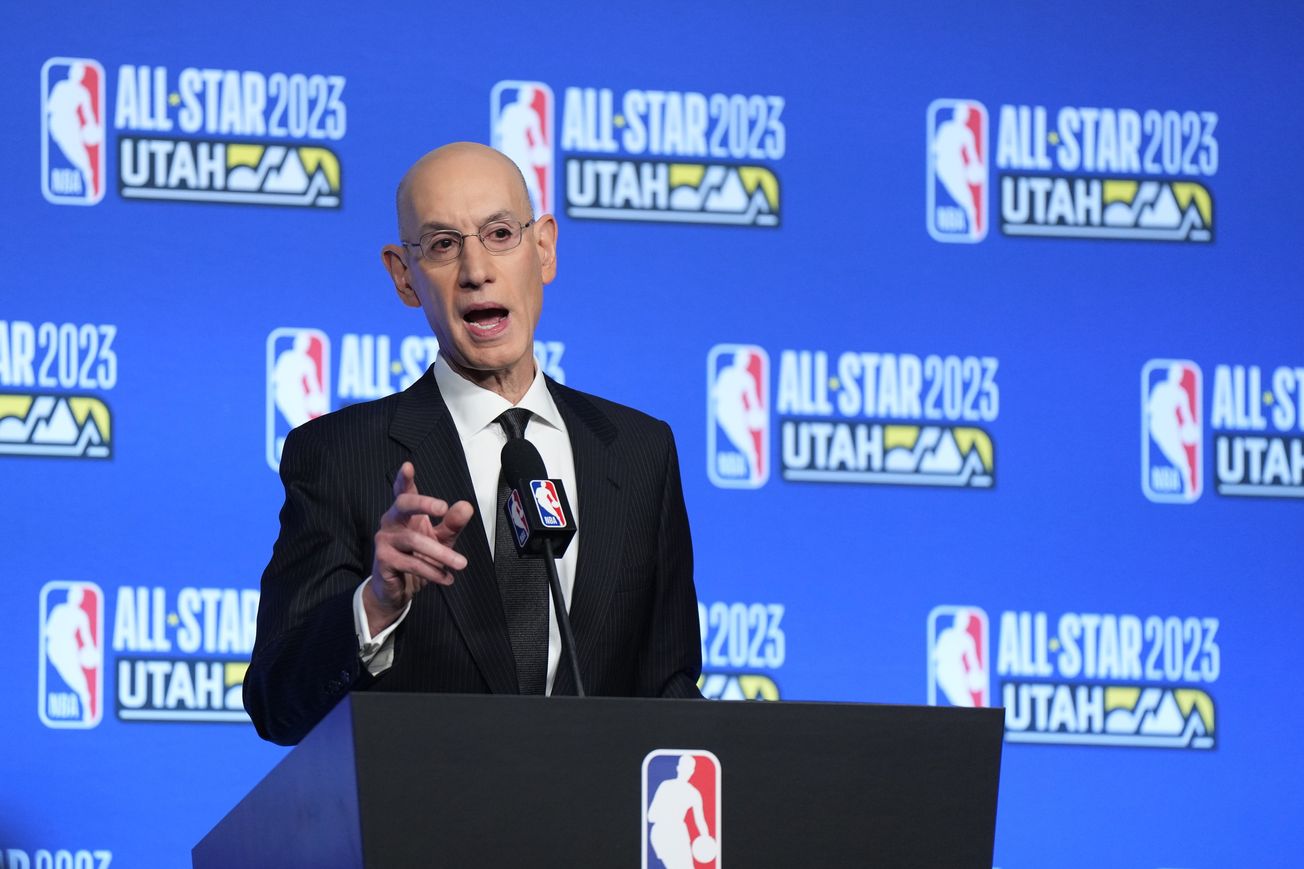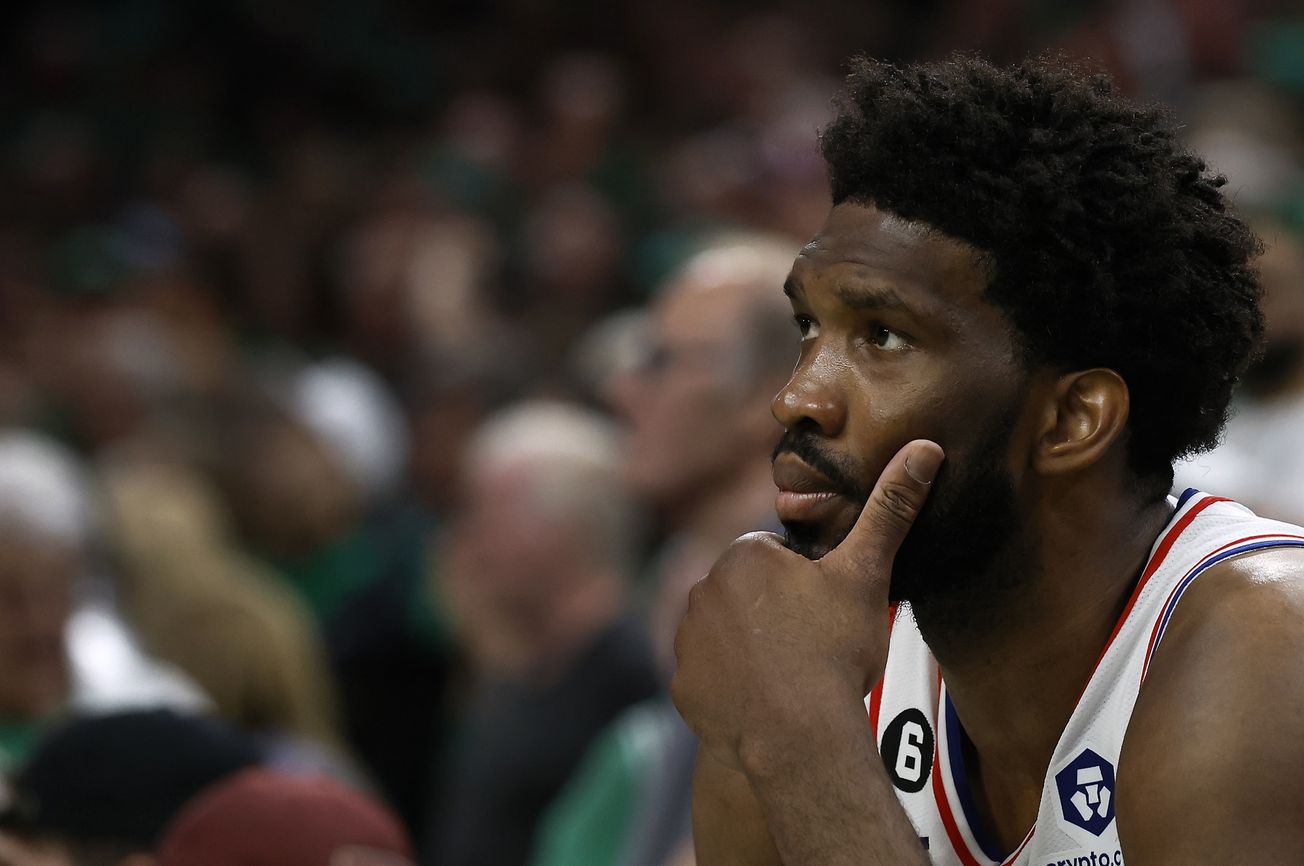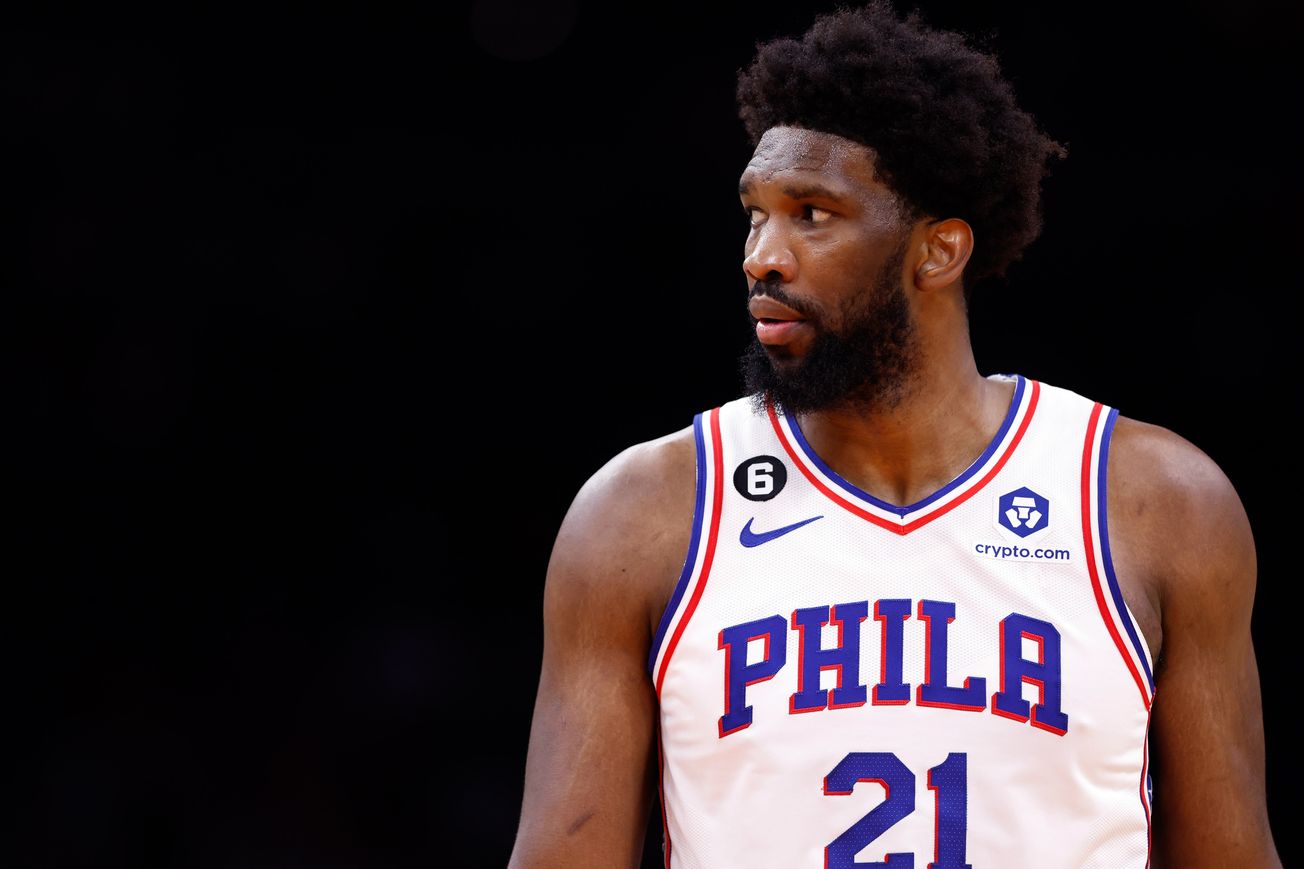After last night's 117-94 win over the Minnesota Timberwolves, the Philadelphia 76ers returned home from their five game road trip with an impressive 4-1 record.
Over the course of that trip the Sixers did some wildly impressive things (basically, anything that had to do with scoring the basketball), and struggled mightily in other areas (basically, anything that had to do with stopping the other team from scoring the basketball).
Before they went into the All-Star break, I noted that we'd likely learn more about who these Sixers are in the final third of the season than we had in the 56 games up to that point.
Since then, we've had the comeback win over the Memphis Grizzlies, when the Sixers scored 35 points in the 4th quarter to beat the second seed in the West; the blown lead turned near comeback turned late game referendum against the Boston Celtics, owners of the best record in the NBA up to that point; a disaster of an effort against the Miami Heat, who outworked and outexecuted the Sixers; a bounceback, dominant win against the same Heat, despite playing without Joel Embiid; a disaster of a defensive performance against Luka Doncic and Kyrie Irving, albeit on the second night of a back-to-back; a clutch, 48-point fourth quarter performance to hand Milwaukee their first defeat in a month and a half; a shoot-out over the Pacers, where they won a game despite allowing 143 points in regulation; and a road win over the Timberwolves, despite playing without James Harden.
Overall, since returning from the All-Star break the Sixers have gone 5-3, which is quite the feat since, a) five of those eight games were on the road, where they went 4-1, and b) every opponent except the Pacers has a winning record, and it includes wins over the second seed in the West (Grizzlies), the now top seed in the East (Bucks), and a coin flip loss to the second seed in the East (Celtics).
| Opp | Res | Net (rk) | Off (rk) | Def (rk) |
|---|---|---|---|---|
| Mem (38-26) | 110-105 W | 4th | 14th | 2nd |
| Bos (45-21) | 107-110 L | 2nd | 4th | 4th |
| Mia (35-31) | 99-101 L | 21st | 25th | 5th |
| @Mia (35-31) | 119-96 W | 21st | 25th | 5th |
| @Dal (34-32) | 123-133 L | 11th | 6th | 23rd |
| @Mil (47-18) | 133-130 W | 3rd | 16th | 1st |
| @Ind (29-37) | 147-143 W | 26th | 20th | 26th |
| @Min (34-33) | 117-94 W | 17th | 21st | 8th |
| Rec | 5-3 | +5.4 | 124.7 (4th) | 119.3 (23rd) |
(The Sixers' schedule since the All-Star break. Net rating, offensive rating and defensive rating are listed as the opponent's league-wide rank. The bottom row is a summary of the Sixers' performance since the All-Star break).
Individually, since the All-Star break Joel Embiid is averaging 34.6 points per game, Harden is averaging 24.9 points and 10.7 assists and Maxey is putting up 22.5 points per night and shooting 47.9% from 3-point range.
So let's take a step back and summarize what we've learned about the team during this tough, and mostly successful, stretch of play.
Joel Embiid and James Harden have evolved
Any and all conversations around this Sixers team eventually (and usually quickly) lead to one place: but what about the playoffs? Why will the outcome be different this year than it was in the past?
It's a question worth asking, since the Sixers haven't advanced beyond the second round of the playoffs in the five years that Embiid has led them to the postseason. But it's also a question that has a pretty simple answer, or at least theory that we can present as to why this year might be different: because your two main focal points, Embiid and Harden, are different.
Saturday's game against the Bucks was perhaps the perfect illustration of that. Milwaukee has the #1 ranked defense in the league, allowing just 110.0 points per 100 possessions. The Sixers dropped 48 points on that defense in the fourth quarter on Saturday night, and while you would certainly never say that kind of success against a defense as good as Milwaukee's is sustainable, it also wasn't simply the result of the Sixers making impossible shots. Their execution was impeccable as well
It all comes down to Embiid and Harden, which isn't exactly a profound statement to anyone who has followed NBA basketball over the course of the last, oh, 50 years or so. Stars matter, and your championship aspirations rest largely on their shoulders. But that means that the jump that each of them have made is important.
In prior years, you could just see the Sixers heading into a playoff series against the Bucks with their half-court offense depending on Embiid trying to post-up Brook Lopez, one of the best post defenders on the planet, or on Ben Simmons trying to create in the half-court with smoke and mirrors, with snug pick-and-rolls to hide the fact that nobody defends him beyond the restricted area.
But now Embiid has that foul line jumper, which he has slowly and consistently developed over the years to the point where it's virtually automatic. Lopez, as good as he is, is going to play in a deep drop and concede that shot, and the Sixers can get into that set any time they want. Assuming Embiid doesn't get an elbow to his eye socket, even the best defense in the league isn't going to have an answer for that.
But perhaps the biggest difference with the Sixers' offense compared to prior years, and even compared to the version that appeared in last year's playoff run, is James Harden, who finished with 19 points and four assists in the fourth quarter alone on Saturday night. He was a part of virtually everything the Sixers did in that decisive fourth quarter, in a way I couldn't imagine him being able to do at this time last year.
The moment I realized it probably wasn't going to work last year was a late March contest in Detroit, when the Pistons, who had nothing to play for at that point, kept letting Isaiah Stewart switch onto Harden off of pick-and-rolls and dared, DARED, the three time league-leading scorer to create offense off the dribble. He couldn't, and at that point you worried how much that two-man game the Sixers were relying on would be able to dominate against the league's better competition.
Contrast that with Saturday night, when Harden was searching out Khris Middleton to go matchup hunting, and the difference is night-and-day.
And sure, Middleton looks like he may have lost a step here at 31, but over this stretch we've seen Harden take athletic, young big men like Nic Claxton and Evan Mobley, and exceptionally savvy defenders like Al Horford, off the dribble in impressive fashion as well.
So far this season, Harden is 114.2 points per 100 plays as a scorer in isolation opportunities, per Synergy Sports. That was under 100 with the Sixers last year. His field goal percentage is 6.4% higher on those drives. He's averaging 103.2 points per play in the half-court this season, compared to 93.2 last year with the Sixers.
His dribble drive game, even in his prime, was never based on blazing speed, a la Tyrese Maxey. But in the past when he caught a defender overplaying his jumper, or got a defender off-balance with his change of direction moves, he had enough burst to get by his man, force rotations, and make plays out of that. He couldn't do that last year.
He can now, and that's a truly massive development. I don't want to say that Harden looks like prime level Harden athletically, because that would be ridiculous. But he's looking a lot more like the pre-hamstring injury Brooklyn Nets version of James Harden.
To make matters worse (for opponents), the extra burst Harden clearly has in his legs has translated to lift on his jumper as well. He has an eFG% of 54.1% on jumpers off the dribble this season, per Synergy Sports, which translates to 108.0 points per play. That ranks as the 15th most efficient off-dribble jumper out of the 122 players who have used at least 100 possessions this season, a ridiculous level of efficiency given how many of them are bail-out shots at the end of the shot clock. That is a massive improvement over his efficiency last season (48.7% eFG%, 97.0 points per 100 plays).
And defenders have noticed, sending more attention Harden's way as they look to contest his shot whenever he comes off of a screen. And when all eyes are on Harden, good things tend to happen, either because Harden can take his off-balance defender off the dribble, or he can find passing lanes, sometimes to Embiid rolling to the rim and other times to shooters on the perimeter after their defender focuses a bit too much on the Sixers' two stars.
Combine all of that and you should have significantly more confidence that the Sixers' half-court offense will succeed in the playoffs than you ever have. Part of that comes down to Embiid, who continues to evolve. But even more of that comes down to Harden. There just isn't a good way to defend the Sixers' two-man game, and even great defenses are struggling to do so.
But there's another side of the court to talk about...






